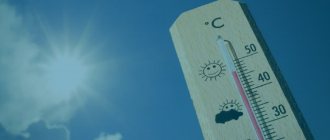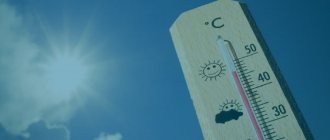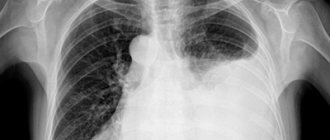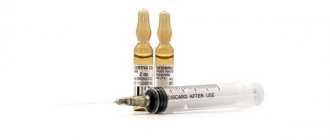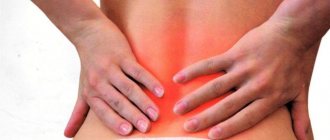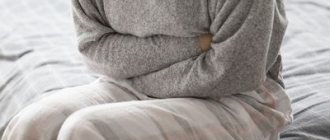Some people love the heat, dream all year about the scorching summer sun, leaving stunning bronze marks on the body, and enjoy every ray of sunshine. Some people absolutely cannot stand the heat and hide in the shade all summer, surprising those around them with the milky white color of their own skin. It doesn’t matter whether it’s about you or not. It is important that both the former and the latter equally expose themselves to the risk of sunstroke or heatstroke during the hot season.
What is sunstroke? Sunstroke is an acute painful condition that occurs due to overheating of the head by direct rays of the sun. As a result, the blood vessels of the brain dilate, and there is a strong flow of blood to the head, which can “stagnate” there. In some cases, even ruptures of small blood vessels occur in the brain, which threatens to disrupt the peripheral and central nervous systems of the human body.
Sunstroke is a special form of heatstroke. Sunstroke indicates that the body has acquired more heat than the body could manage to properly cool the organs and body. As a result, sweating and blood circulation are disrupted, and free radicals accumulate in the tissues. The consequences of such a blow can be very serious, and even threaten cardiac arrest and death of the victim.
Why does a person overheat?
The human body is capable of maintaining a temperature of about 36.7 degrees Celsius. Excess heat is removed from the body through sweating. However, the natural process of thermoregulation may be disrupted if a person:
- is exposed to high temperatures and high humidity for a long time,
- is exposed to direct sunlight,
- moves intensively in a hot and stuffy room,
- dressed too warmly
- doesn't drink enough.
If normal cooling of the body is impossible, the water-salt balance in the body is disturbed, blood circulation and heart function worsen. This can lead to serious consequences, including cardiac arrest or brain hemorrhages. Heat injury can occur anywhere: on the beach, on the street, and even in the office. In any case, it requires immediate assistance
and, in case of severe symptoms, urgent consultation with a doctor.
How to behave in the heat
Sergey Boytsov, chief specialist in preventive medicine at the Russian Ministry of Health and Social Development, director of the State Research Center for Preventive Medicine, talks about how to improve your well-being on the hottest summer days.
What is the essence of sunstroke?
Doctors use this term to describe overheating of the body. “This is a condition that can occur when a person’s body becomes too hot,” comments Andrey Besedin, Ph.D., family doctor at GMS Clinic. - Sunstroke causes damage to the central nervous system. This condition can occur both during exposure to the sun and several hours later.” Our body is able to regulate body temperature quite well: for example, when it increases, sweating is activated.
But sometimes there are glitches in this process. “Heat stroke occurs when compensatory mechanisms cannot cope with heat transfer, and body temperature rises significantly,” says Ivan Golubev, a therapist at the MEDSI Clinical Diagnostic Center in Grokholsky Lane. “Because of this, inflammatory reactions in the body are activated, which can result in failure of various organs and systems. Possible failure of the nervous system, muscles, liver, kidneys, lungs and heart.”
What to do?
1. Hide from direct sunlight in the shade or cool room. 2. Take a horizontal position. 3. Unbutton or remove clothing. 4. Turn on the fan or wet your body with cool water. 5. Drink cool, salted water in small sips to restore the balance of minerals and fluids in the body. 6. Never drink alcohol or drinks containing caffeine. They cause dehydration. 7. If a person’s condition does not improve after a while or gets worse, call a doctor immediately.
Causes of Heat Stroke
Our organs and systems have very strict temperature requirements for the internal environment - the spread is only a few degrees. The external permissible range is somewhat wider due to numerous physico-chemical and psychological adaptive mechanisms controlling heat production and heat transfer:
- increased/decreased sweating and urination;
- decrease/increase in motor activity;
- increased/decelerated breathing rate and heart contractions;
- dressing/undressing, etc.
But it is also very small, since these mechanisms are not omnipotent. Especially if the time and/or intensity of heat exposure is large. Moreover, their critical values are individual. Some people suffer more from overheating, while others tolerate it much more easily.
What does this depend on?
- From genetic factors (for example, representatives of the Negroid race are more resistant to overheating).
- From acquired physical and psychological habits to a certain climate.
- From age.
- On the presence/absence of diseases.
- The presence/absence of “aggravating circumstances” accompanying heat exposure.
The following factors increase the body’s susceptibility to overheating and aggravate its consequences:
- Children and old age (in both of them the mechanisms of thermoregulation are weakened).
- Overweight.
- Acute and chronic ailments (high blood pressure, neurocirculatory dystonia, heart and kidney failure, endocrine pathologies; diseases accompanied by increased body temperature, etc.).
- Chronic stress in the exhaustion phase or negative psychological perception of the very fact of overheating.
- Taking medications that increase heat production by the body itself (for example, caffeine, ephedrine, dopamine).
- Physical activity in conditions of elevated ambient temperature.
- Clothing made from materials that interfere with heat dissipation.
How to avoid overheating of the body?
1. Start your day early.
The lowest temperature on hot days is usually in the morning.
If you have to work outside or have a long commute to the office by public transport, get up early. Most likely, you will have time to find yourself in a cool room before the extreme heat begins. 2. Drink more fluids.
Carry a bottle of water with you and drink regularly, even if you don't feel like it.
Try to drink cool, but not ice-cold water. Avoid sugary drinks, alcohol and caffeine, which quickly lead to dehydration. 3. Take frequent breaks.
If you work outside or have to walk in the heat, try to rest more often - at least 15 minutes every hour and a half. A shady place or a cool room is suitable for relaxation.
Feeling great in summer
The chief physician of the Treatment and Rehabilitation Center of the Ministry of Health and Social Development of the Russian Federation, Tatyana Shapovalenko, tells how to survive the summer heat.
4.
Choose light clothing.
On hot days, give preference to light-colored clothing made from lightweight material.
Choose loose-fitting items that allow air to circulate freely along the body. Avoid tight, tight-fitting synthetic materials that do not allow air to pass through. Don't forget about a light, light-colored hat. 5. Streamline your workflow.
In the midst of the heat, cancel trips on public transport, work in your garden and other activities that require physical activity.
6. If you come to a resort,
give your body time to acclimatize.
Don't go out into direct sunlight on the first day - allow yourself to be lazy in the shade. 7. Monitor your condition.
If you feel tired, dizzy or slightly nauseous, immediately move to a cool room.
Signs of sunstroke
The first symptoms of sunstroke are fatigue, headache, dizziness, and a feeling of “ache” in the body. “There is also a chance of nausea and vomiting. A little later, tinnitus, shortness of breath, rapid heartbeat, and darkening of the eyes may appear, warns Ivan Golubev. - At this stage it is important to provide assistance! Further overheating leads to rapid damage to the central nervous system (CNS), cyanosis of the face occurs, severe shortness of breath, the pulse becomes frequent and weak. This is accompanied by muscle cramps and hallucinations. Breathing becomes uneven, thoughts are confused, and delirium occurs. The victim may lose consciousness at any moment.”
Other signs of sunstroke should also alert you. “When overheated, patients complain of weakness, “weakness,” drowsiness, headache, thirst, nausea, tachycardia, shortness of breath, body temperature rises to 40-41˚C,” adds Andrey Besedin. — Almost always the patient has psychosomatic problems (loss or confusion, inability to get up, dizziness, etc.). This is a medical emergency that must be treated quickly because it can cause death."
According to doctors, some symptoms of sunstroke can be confused with signs of a stroke, severe allergies to certain medications, acute bacterial infections and thyrotoxic crisis. “All of these conditions, including heat stroke itself, can be extremely dangerous, so you should not make a diagnosis yourself. In this situation, it would be correct to immediately call an ambulance team,” warns Ivan Golubev.
While waiting for paramedics, the victim must be given first aid.
Sunstroke is dangerous!
Some people dream all year about the scorching sun, leaving stunning bronze marks on the body, enjoying every ray of sunshine. Some people cannot stand the heat and hide in the shadows, surprising others with their pale skin. It doesn’t matter whether it’s about you or not.
It is important that both the former and the latter equally expose themselves to the risk of sunstroke or heatstroke during the hot season. So what is it and how to deal with it?
What is sunstroke?
Sunstroke is an acute painful condition that occurs due to overheating of the head by direct rays of the sun. As a result, the blood vessels of the brain dilate, and there is a strong flow of blood to the head, which can “stagnate” there. In some cases, even ruptures of small blood vessels occur in the brain, which threatens to disrupt the peripheral and central nervous systems of the human body.
If the patient's condition is diagnosed as sunstroke, its symptoms and signs will have characteristics such as fever, lethargy, headache and even convulsions. The reason for such manifestations lies in the structural and functional changes in the subcortical-stem parts of the brain, which regulate blood circulation, breathing, body temperature, level of sleep or wakefulness, etc.
Another definition of “sunstroke” is a type of heat stroke that occurs as a result of significant overheating of the body.
Causes of sunstroke
The main causes of sunstroke are the sun's rays mercilessly scorching the uncovered head, as well as the naked body. Contributors to sunstroke: stuffiness, windless weather, drinking alcohol, overeating. You should absolutely not fall asleep when you are sunbathing; if you are afraid to fall asleep in the sun, ask the people relaxing nearby to wake you up.
Risk factors:
- Direct exposure to the sun on an uncovered head;
- Increased weather humidity;
- The presence of certain health problems, in particular: hypertension, vegetative-vascular dystonia, endocrine disorders, heart disease, obesity;
- Age-related risks: children under 1 year of age, especially newborns, and the elderly. Sunstroke in children and the elderly is most likely and threatening, because in children the natural thermoregulation of the body is not yet sufficiently perfect, and in older people it already functions poorly;
- Overweight, obesity;
- Alcohol intoxication;
- Smoking;
- Stress, nervous tension.
Mild symptoms:
- Headache;
- Nausea;
- General weakness;
- Increased breathing and heart rate;
- Pupil dilation.
Moderate symptoms:
- Severe headaches with nausea and vomiting;
- Sharp adynamia;
- State of stupefaction;
- Unsteady gait;
- Uncertainty of movements;
- At times, a state of fainting;
- Increased breathing and heart rate;
- Bleeding from the nose;
- Body temperature 38-40 °C.
Sunstroke, symptoms of a serious condition.
The severe form develops suddenly. The skin of the face is hyperemic, later pale cyanotic. Possible: changes in consciousness from confusion to coma, tonic and clonic convulsions, delirium, hallucinations, involuntary release of feces and urine, temperature rise to 41-42 °C, sudden death is possible.
With severe sunstroke and the absence of urgent medical care, mortality occurs in 20-30% of cases.
Heatstroke.
Heat stroke is an acute painful condition that occurs when the body overheats. As a result, the processes of heat generation increase while heat transfer in the body decreases or becomes difficult, which disrupts its vital functions.
Anything that, in one way or another, can disrupt the secretion of sweat and make it difficult to evaporate contributes to overheating of the body: humidity and high air temperature, overwork, active physical work in synthetic, leather or rubberized clothing, dehydration, long hikes, walks in hot weather, abundant food.
Heatstroke is much easier to get than sunstroke: for it, the sun is not a prerequisite; it is enough to simply work hard in excessively warm clothes that do not allow air to pass through, or spend several hours in a stuffy room with poor ventilation.
Help with sun and heat stroke.
Actually, help with sunstroke and heatstroke is the same in both cases.
When the first symptoms appear, it is necessary to quickly respond by providing first aid to the victim. Do not forget that this is first aid, and it is better to call an ambulance immediately, since it is usually difficult for a person to navigate and correctly assess the severity of the victim’s condition, especially if sunstroke is in children or the elderly.
General rules of first aid: eliminate the influence of overheating factors - immediately take the victim out into the fresh air, always in the shade, or place him in a cool, well-ventilated room, lay him down with his head raised, unfasten the collar, or better yet, undress him to the waist. Place a cold compress on your head and spray your body with cold water. Give plenty of cool water to drink.
First aid:
- Move or transfer the victim to a shaded place or cool room where there is enough oxygen and a normal level of humidity. It is desirable that the space in the immediate radius be open, without large numbers of people;
- It is imperative that the victim be put down;
- The head and legs must be raised by placing something under the neck and ankles, for example, a bag or a folded towel;
- Free the victim from outer clothing, especially those squeezing the chest and neck, unbutton the collar, bra, remove the trouser belt, it is better to remove clothes made of synthetic or thick fabric completely, at least to the waist;
- Give the patient plenty of water, always cool and preferably mineral water, you can add sugar and salt on the tip of a teaspoon;
- Wet the victim's face with cold water, apply a cold washcloth to the forehead and neck;
- Wet any cloth with cold water and pat your chest, you can pour water over the whole body with water no warmer than 20 °C, or, if the victim is able, take a cool shower - 18-20 °C;
- Apply a cold compress, ice cubes or a cold bottle to the head, under the back of the head and on the forehead;
- Fan the victim with frequent movements;
- If involuntary vomiting begins, be sure to clear the victim’s airways of vomit, do not let him choke, turn him slightly on his side;
- The body can be sprayed with cold water or wrapped in a wet sheet;
- If consciousness becomes cloudy, let the patient smell the vapors of a 10% ammonia solution;
- In case of respiratory distress, lightly moisten a cotton swab in ammonia (found in any car first aid kit) and carefully bring it to his nose several times;
- In emergency cases, if you faint, stop breathing, or cannot feel your pulse, do not wait for doctors! Remember what you were taught at school, and give artificial respiration to the victim and massage the heart until respiratory movements and cardiac activity appear - use the pulse as a guide.
Only the lazy don’t write about the abnormal heat in Russia now. Everyone is publishing folk recipes on how to better survive the heat. But there are several basic principles of “hot life” that it is better not to deviate from.
Prevention measures:
- In sunny, hot weather, protect your head with a light, light, easily ventilated hat (light, better reflects sunlight), and protect your eyes with dark glasses;
- Avoid staying in open areas with direct sunlight. The sun is most active and dangerous during the period: from 12.00 to 16.00 or from 10.00 to 17.00 - in countries close to the Equator;
- Avoid exposure to direct rays of the sun on your uncovered body, and especially your head - cover yourself with an umbrella, alternate swimming and resting on the sand, do not fall asleep in the sun, do not take long excursions in the heat, drink more;
- Do not stay in the sun for a long time, even if you are on the beach under an umbrella. The duration of sunbathing at first should not be longer than 15-20 minutes, later you can gradually increase the time, but no longer than two hours with mandatory breaks in the shade and coolness;
- It is better not to lie down to sunbathe, but to move, take sunbathing in the morning and evening;
- Do not sunbathe immediately after eating; you can go out into the sun only after an hour;
- Wear light, light clothing, easily ventilated, made from natural fabrics (linen, cotton are ideal) that do not prevent sweat from evaporating;
- Don't eat too much during hot weather. Give preference to vegetables and dairy products;
- Maintain water balance in your body. While on vacation, it is better to drink at least 3 liters a day at sea;
- Wipe your face with a wet, cool handkerchief from time to time, wash your face more often and take a cool shower;
- If you feel unwell, seek help immediately or take possible measures yourself.
Heatstroke and sunstroke occur most frequently and rapidly in children and the elderly. Due to their age, their body has physiological characteristics; in fact, it is enough that their body has an imperfect internal thermoregulation system. Teenagers are also at risk due to the hormonal activity of the body. This also includes people who are unaccustomed to heat, those suffering from obesity, endocrine and cardiovascular diseases, and, of course, people who abuse alcohol.
If you belong to one of the risk groups, you especially shouldn’t wait for the heat and sun to hit your health, and in the most literal sense of the word. Preventive measures must be taken in advance. Heat stroke can only be prevented by creating normal living and working conditions where you work and live: normal temperature, ventilation and humidity in the premises, clothing appropriate for the season - all this will help you reduce the risk of sunstroke and heatstroke.
And may the sun be your joy!
Add a comment
JComments
Updated: 07/08/2020 13:48
Provoking factors
Factors that provoke the development of general overheating of the body include:
- wearing thick clothing made of synthetic materials (including rubberized parts);
- high air humidity indoors and outdoors;
- outdoor games, sports and physical activity in the heat;
- non-compliance with drinking regime;
- consumption of alcoholic beverages and drugs;
- taking antidepressants, diuretics, antiparkinsonian drugs, antihistamines and laxatives.
The risk group includes people with the following problems:
- weather sensitivity;
- obesity;
- hyperhidrosis/anhidrosis;
- tendency to allergies;
- pathology of internal secretion organs;
- history of acute disorders of cerebral and coronary circulation;
- chronic diseases of the heart, lungs, liver, pancreas.
Children, pregnant women and the elderly are more easily affected by heat, even in the absence of chronic diseases and other listed pathologies.
